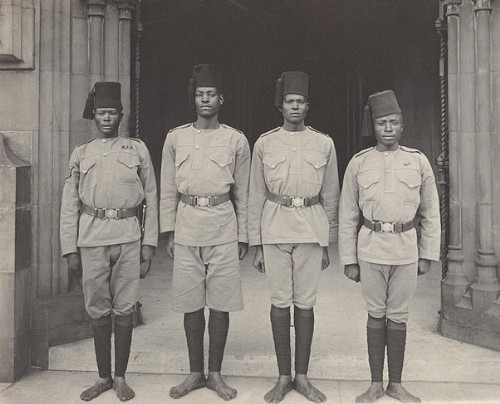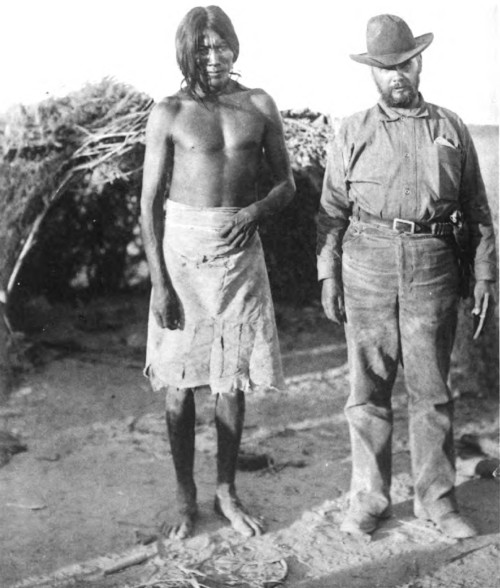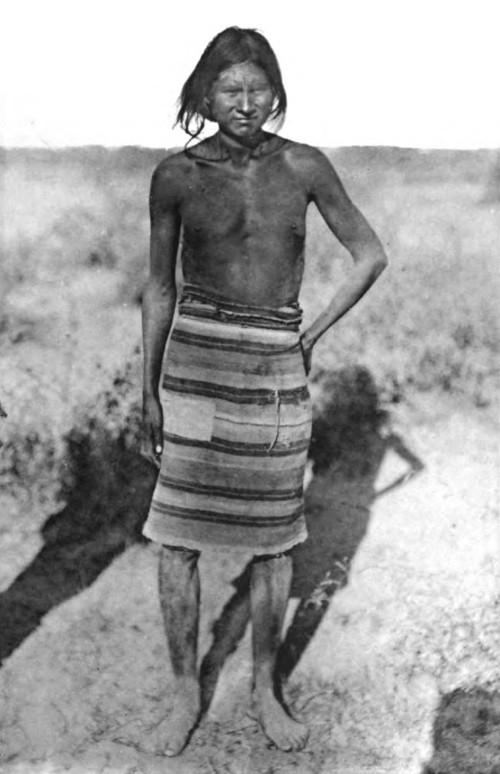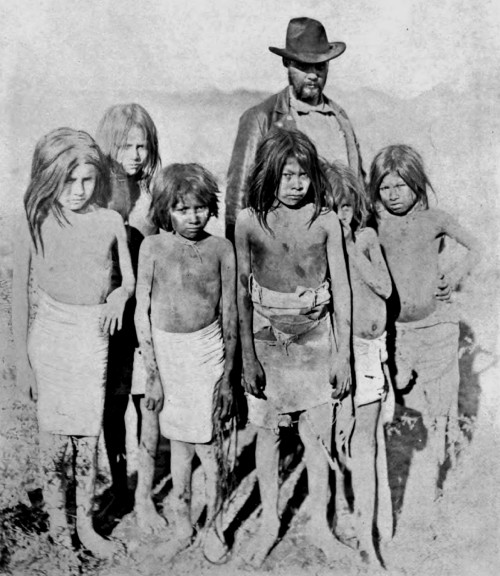Guest Post June 28, 2013 by Bob Neinast

So, how hot can you stand when you go barefoot? How about 180°F? Neither can most.
But if our feet had developed a “Seri Boot” we might be able to.
The “Seri Boot” is named after the Seri Indians of the Gulf of California. Specifically, they live/lived on Tiburón Island and the mainland shore adjacent to it. And they did so barefoot, in that desert environment.
How did they do it? It turns out that the human body is ever-so-adaptable. Just as the foot can build up callous for rough surfaces, it also does so in response to walking (or running) regularly on hot surfaces.
Here’s an article (with my comments) from a journal called The Masterkey for Indian Lore and History.
NATURE AND ORIGIN OF THE “SERI BOOT”
By Ronald L. Ives
Just before the turn of the century, W. J. McGee and party made a pioneer study of the primitive Seri Indians, who inhabit Tiburon Island, and the adjacent Sonoran shore of the Gulf of California. In his physical description of the Seri of that time he comments upon the “integument covering feet, ankles, and lower legs is incredibly firm and hard, more resembling that of a horse or camel than the ordinary human type.” At the time of McGee’s visit, the Seri wore few clothes and no shoes.
The report from W. J. McGee actually said more than that:
The integument covering feet, ankles, and lower legs is incredibly firm and hard, more resembling that of a horse or camel than the ordinary human type; its astounding protective efficiency being attested by the readiness with which the Seri run through cactus thickets so thorny as to stop horses and dogs, or over conglomerated spall-beds so sharp that even the light coyote leaves their trail.
That’s right. They had so much callous built up that they could run with impunity through cactus.
Here is one of the Seri men.

Continuing with the Masterkey article . . .
This same pedal armor was noted by Mexican writers, and has become generally known as the “Seri Boot.” A small sample, procured in 1936, was studied microscopically, and found to be normal callous tissue. A pathologist, seeing the sample, reported that the possessor undoubted suffered from “extreme hyperkeratosis.” Further checking showed that the Seri who lived on the outskirts of Hermosilla, and who customarily wore clothes and shoes of a sort, did not have the “boot.” Further investigation after World War II, at which time the Seri had worn clothes and shoes for more than a decade, showed almost complete absence of the “boot,” but very heavy callous growth on exposed pedal surfaces.
Additional observations, largely during World War II and shortly thereafter, disclosed that barefoot and unclothed people in most of the world’s sandy desert regions have a similar callous “boot,” while their near-relatives, who live in less arid or sandy regions, or who habitually wear clothes, do not have it. In Abyssinia, for example, the integument extends almost to the knees in some of the barefoot natives, but stops at the ankle with foot-soldiers, of the same tribal origin, who wear puttees, but not shoes.
I find this quite interesting, that the callous will continue to grow for a good long while.
Continuing . . .
Apparently, this type of keratosis will develop with any normal human, on any area repeatedly exposed to dry heat at temperatures exceeding about 130° F. While there are surely individual variations in the exact temperature and duration necessary for callous development, the above figure seems to be a good working approximation. Soil surface and sand temperatures, in areas where the “Seri Boot” and similar pedal hyperkeratosis have been observed, run from 30° F. to 70° F. above shade temperature, as determined by fine wire thermocouple measurements. Sand temperatures of 180° F. have been measured repeatedly in the Salt Lake and Sonoran Deserts when air temperatures, measured in the shade at “nose level” have been between 100° F and 120°F.
From the foregoing, it appears that the “Seri Boot” is a normal product of exposure to sand at high temperatures, and is neither a pathological condition, sometimes attributed to the eating of various sorts of offal, nor a Mendelian trait unique among the Seri.
The Seri are also tremendous long-distance travelers, both walking and running, and are considered faster than their (somewhat) near neighbors, the Tarahumara of Born to Run fame. This is what is said in the 1895-96 Report of the Bureau of American Ethnology:
The Seri range over a region of runners: the Opata themselves are no mean racers, since, according to Velasco and Bartlett, “In twenty-four hours they have been known to run from 40 to 50 leagues” (from 105 to 130 miles); and, according to Lumholtz, their collinguals, the Tarahumari, or “Counting-Runners”, are named from their custom of racing, and display almost incredible endurance.
* * *
The Papago, of the same region and linguistic stock, have a racing game in which a ball of wood or stone caught on the foot is thrown, followed, and thrown again until the two or more rival racers have covered 20 to 40 miles in the course of a few hours; and their feats as couriers and trailers are quite up to those of the Opata. Yet among all these tribes, and among the Mexicans as well, the Seri are known as the runners par excellence of the Sonoran province; and it is but natural that their astounding swiftness and lightness of foot should have brought them an appellation among contemporaries to whole these qualities peculiarly appeal.
(That last sentence refers to speculation that the name Seri, given them by the other Indians, means movers, with great emphasis.)
And of course the Seri did this barefooted, not with Tarahumara sandals.

The Seri also demonstrated persistance hunting, that is, running prey to exhaustion in the heat, and then simply grabbing them. The following is also from the Ethnology report:
It was learned that half-grown Seri boys are found of hunting hares (jack-rabbits); that they usually go out for this purpose in threes or fours; that when a hare is started they scatter, one following it slowly while the others set off obliquely in such a manner as to head it off and keep it in a zigzag or doubling course until it tires; and that they then close in and take the animal in their hands, frequently bringing it in alive to show that it was fairly caught—for it is deemed discreditable, if not actually wrong, to take game animals without giving them the opportunity for escape or defense by exercise of their natural powers.

And it’s not just the boys:
Similarly, Mashém described the chase of the bura and other deer as ordinarily conducted by five persons (of whom one or two may be youths), who scatter at the sight of the quarry, gradually surround it, bewilder it by confronting it at all points, and finally close in to either seize it with their hands, or perhaps to brain it with a stone or short club; the former being held the proper way and the latter a partial failure.
And all this is done barefooted, with the adaptations that our bodies naturally make when exposed to such conditions.
So, you can probably handle barefooted much hotter temperatures than you ever imagined. Of course, as with anything barefoot-related, you have to make sure not to do too much too soon, but you ought to be able to work up, just as you do for rough surfaces, to higher and higher temperatures. Your body will adjust, if you let it (and don’t overdo it).
Isn’t going barefoot amazing?
This article re-posted with permission from http://ahcuah.wordpress.com/2013/06/28/the-seri-boot/
1 thought on “The Seri Boot”
Leave a Reply
You must be logged in to post a comment.


I’m a hard-core barefooter woman from Russia and this is amazing!